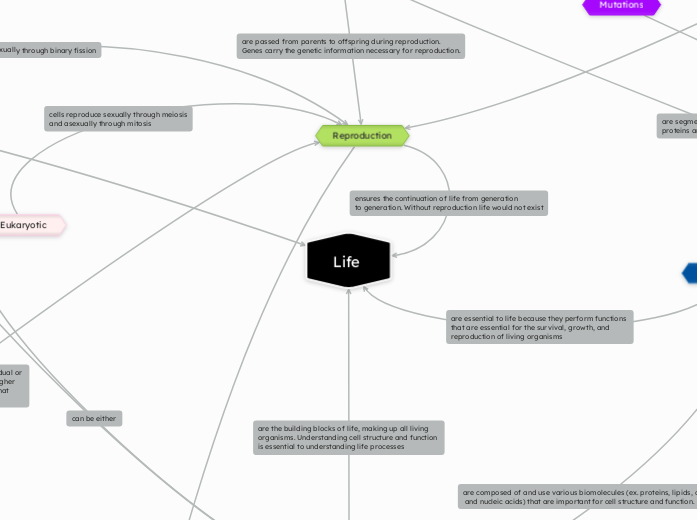is a type of biomolecule that carries genetic information
are composed of and use various biomolecules (ex. proteins, lipids, carbohydrates,
and nucleic acids) that are important for cell structure and function.
produces different combinations of genetic material in each of the four daughter cells.
These different combinations come from the exchange of DNA between paired chromosomes
is determined by how successful an individual or
population is at reproduction. Having a higher
fitness means there are many offpsring that
survive until reproductive age
are passed from parents to offspring during reproduction.
Genes carry the genetic information necessary for reproduction.
is a specific type of cell division that results
in the creation of gametes for sexual reproduction
by halving the number of chromosomes
cells reproduce asexually through binary fission
are different versions of a gene that exist
at a specific position on a chromosome
breaks down complex molecules into smaller units that can be absorbedand utilized by cells,
while cellular respiration converts these molecules into ATP, providing energy for cellular functions.
can be either
impacts the genetic makeup of a species. Individuals with higher fitness survive, reproduce and
pass their traits to the next generation. Over time, impacts the gene pool of a population,
which can lead to the creation of new species through processes like adaptation adn speciation
are used transport nutrients, gasses and waste product within
the cells to support processes like digestion and respiration
are the building blocks of life, making up all living
organisms. Understanding cell structure and function
is essential to understanding life processes
is important for species to
survive and for its continuation
shapes the diversity of life on Earth,which also leads to the creation of new life
forms and the adaptation of organisms to their circumstances
ensures the continuation of life from generation
to generation. Without reproduction life would not exist
are changes in the DNA sequence,
which can alter gene function
contributes to natural selection by deciding which
individuals are more likely to survive and reproduce.
Traits that increase fitness are more likely to be naturally
selected for and continue to exist in future gene pools
is a mechanism of evolution. Due to natural selection, individuals with traits that are beneficial to a
species are more likely to survive and reproduce. Overtime, the selection of favourable traits can
change the species gene pool and genetic makeup, which will eventually lead to evolution
are segments of DNA that code for
proteins and determine traits
are changes in the DNA sequence of a gene
and play a important role in genetics
cells reproduce sexually through meiosis
and asexually through mitosis
happen during meiosis. Mutations that happen during meiosis are more problematic because
meiosis produces sex cells which pass genetic information from generation to generation
provide genetic variations, which serves as new material
for evolution by generating different characteristics
are the primary source of new alleles. By alternating
the DNA sequence of a gene, mutations create genetic diversity
breaks down food into smaller biomolecules like
amino acids and glucose
can lead to the formation of new species
are essential to life because they perform functions
that are essential for the survival, growth, and
reproduction of living organisms
